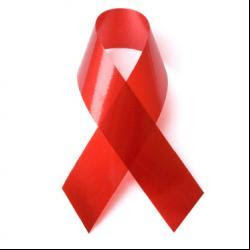
When I was fourteen, I watched my once attentive, doting grandmother carry around a baby doll like it was her own child, smitten with a plastic head and fake eyelashes, cooing at and talking to it like a playmate. Meanwhile, her own nine grown children were usually met with quizzical brows and a glazed-over, unrecognizable gaze. The doll, covered in a white and blue flowered terrycloth onesie, was the only thing my grandmother needed—besides a Wendy's chocolate Frosty from time to time—for simplicity, and Alzheimer's, had replaced her once-sharp mind.
Alzheimer's is a form of dementia that attacks brain cells diminishing a person's memory and becoming fatal over time. September 21st of each year is dedicated to Alzheimer's awareness and conferences and rallies are held to gain attention for this disease and raise money for its research. World Alzheimer's Day put on by Alzheimer's Disease International uses a theme each year to gain support. The 2008 theme is "No Time to Lose" featuring the work that caregivers (nurses, aides, friends, and family) do for Alzheimer's patients all across the world, focusing on the tremendous patience and attendance that they give to Alzheimer's sufferers.
In the last few years, a lot of research has been done to find preventative measures for the disease as well as medications for patients with Alzheimer's to help stop the depletion of brain cells. Although all of the medications have been proven to work only part of the time in patients, some are still able to slow Alzheimer's progress within the brain. While these medications are sometimes helpful in slowing down the disease and regenerating chemicals in the brain that control memory loss, they are not without their faults. According to the Mayo Clinic, daily drugs taken orally such as Donepezil, Galantamine, and Rivastigmine have also shown high risk of gastrointestinal problems, heart disease, and stroke among patients.
Recent research published by HealthNews has shown that there is still a bright future for an Alzheimer's cure from the notes of the World Alzheimer's Conference, a recent article reviewing the pros and cons of a brain scan possible in early detection of the disease, and pursuing a possible link between Alzheimer's and exercise.
I would have loved to be more involved in learning how to help my grandmother, and my family, fight against this disease, and my grandmother's beloved doll now sits wide-eyed in a basket at my home as a tangible reminder of Alzheimer's. This year maybe I'll join an Alzheimer's Memory Walk, to remember those who's minds have let them down.
For more information on World Alzheimer's Day and how to help out, visit the Alzheimer's Disease International website, find a Memory Walk in your area, or simply relive memories by telling them to your favorite Alzheimer's patient, I'm sure they'd love to hear them.







